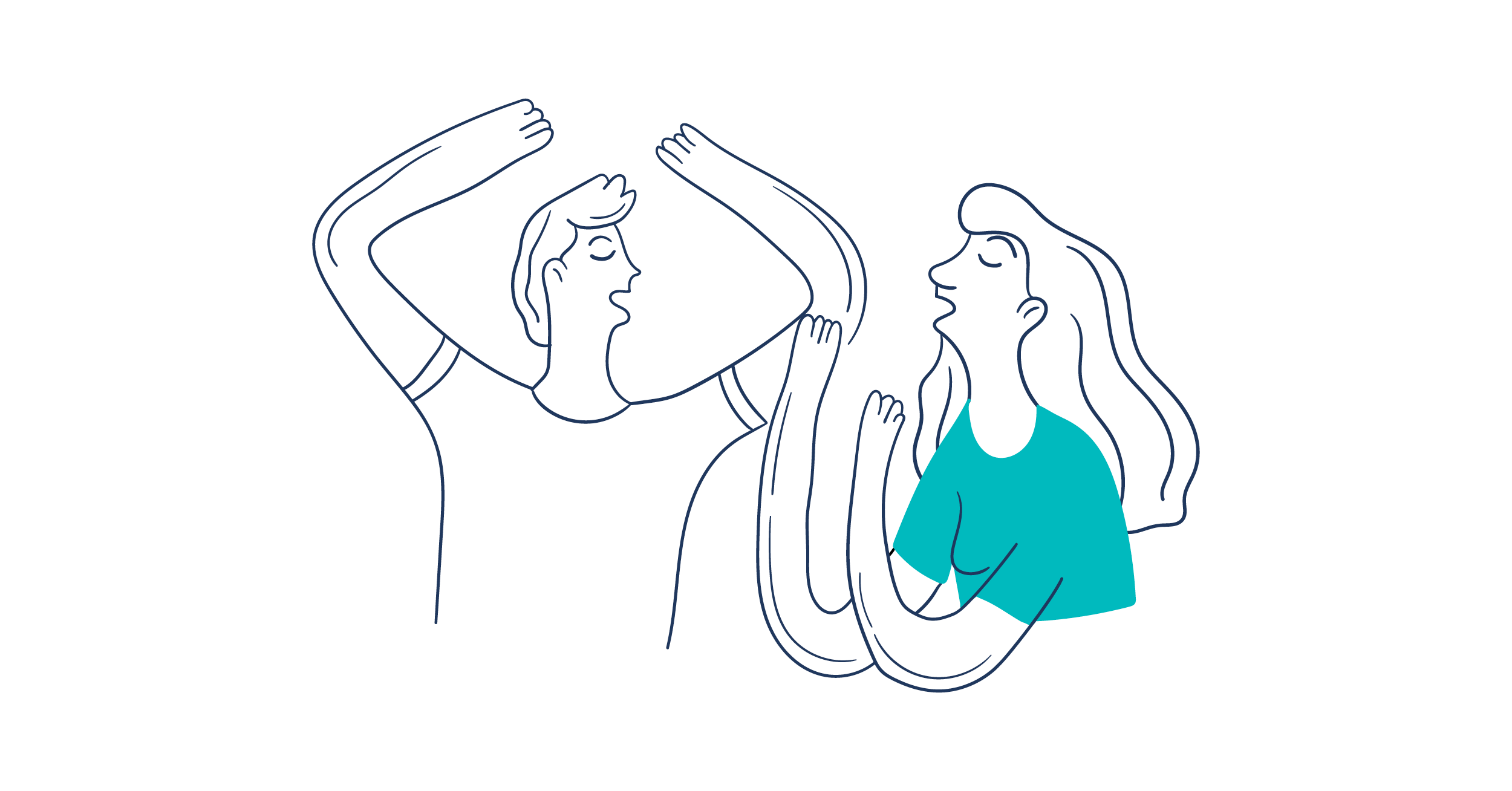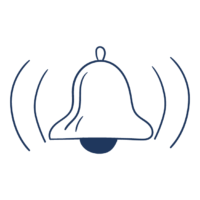De-gendering the French language: the key to inclusive localisation
Picture this: you are looking to freshen up your brand’s content so that, like your values, it can be more comprehensive. For you, the question is no longer “What can we do to put ourselves in front of the customer?”, but “What can we do to make them feel at home?”. See what you did there? As simple as that, you have included more than him or her when talking about the customer. “Them” is a little gem of a word that leads the way to a whole larger movement: inclusive writing.
You may have heard of the infamous debates in France, and more generally French-speaking countries, around the neutral pronoun “iel” and the use of the interpunct, or middle dot. Critics denounce their use as foolish and radical. But like the word them, these writing strategies serve the liberating and important purpose of including everyone: men and women, but also intersex, transgender, and non-binary people.
Inclusive writing comes in many forms, and it is not limited to gender, but this article focuses on how we can make gender-neutral translations into French for you and your customers’ sake.
What is inclusive writing in French?
If you’ve ended up here, it’s probably because you want to know more about inclusive writing and how you can implement it, so let’s start by defining what we’re talking about.
It’s important to understand that French, unlike English, is a gendered language, meaning that all nouns have a gender (an apple is feminine, while a pineapple is masculine for example).
When writing in French, you have to specify the gender of the object or person you’re referring to, and sometimes, that means assuming the gender of a person you don’t know.
Moreover, if you happen to talk about a group of people with both male and female individuals, you should be aware that the masculine form prevails by default over the feminine form. This is a fundamental rule of the French language that we learn from a very young age.
Some even say that this predominance of the masculine gender in the French language could lead to more sexist perceptions of the world. Of course, this can’t be blamed on language alone, there are many other external factors to be taken into account, but language does have a role to play in fighting against these biases.
Due to these grammatical rules, and the reluctance of the Académie française to let the language evolve with the times, French is not a language that makes it easy to include everyone. There is a lack of neutral options available to use and so that’s where inclusive writing comes into the picture.
Inclusive writing is a type of language that avoids using certain expressions or words that could be seen as excluding particular groups of people, whether it relates to gender, race or other prejudicial beliefs. As its name states, inclusive writing is about including everyone in order to respect every individual and show that everyone matters. So how can we make French, a gendered language by nature, more inclusive? It starts by making sure we treat all genders as equal.
Why should you consider a gender-neutral translation?
You probably want your brand or your message to reach as many people as possible, regardless of their gender. That’s why you should consider using inclusive writing in your content and your translations.
The best way to connect with your audience is to show them that you respect them as individuals and to make them feel that they belong. By using inclusive writing, you show them that you care about them — about everyone.
You also prove that you can evolve with the times, that you’re not afraid to adapt to a new reality, and you place your brand as an ally to the cause of inclusivity. Through the use of gender-inclusive forms, you can express your own business values and stand out from organisations who are not sensitive to the cause.
Going for an inclusive approach in French is not an easy task, but our team is here to help you succeed. At AJT, we care about inclusivity and our linguists are familiar with the process. They have received training with advocate Isabelle Meurville of Translature, in order to discover all aspects of inclusive writing and the various methods they can use to address an audience in the most respectful way.
Three strategies to de-gender the French language
The main goal of a gender-neutral language is to be, well, neutral: to include every gender in society so that individuals who are usually marginalised or made invisible can see themselves in your content.
Synonyms, umbrella terms, paraphrasing, proximity agreement, collective nouns: the French language is a rich source of options, which can be mixed and matched to fit all types of copy. At AJT, we have created basic guidelines to de-gendering French which our linguists are able to use in their translations and in accordance with our clients’ preferences. Here are just a few examples of the techniques we use.
Gender-neutral (epicene) wording
There are terms where the dichotomic masculine and feminine dissolve into a single word. Instead of having “expert” (male expert) or “experte” (female expert), we would say “spécialiste”, which could refer to either gender. This technique works well with umbrella terms such as the use of “modération” (moderating team) instead of “modérateur” (male moderator) or “modératrice” (female moderator).
Pros: Gender-neutral wording is easy on the eyes, saves space and – in contrast to most other forms of gendering – also includes non-binary people.
Cons: If there’s no neutral term available, linguistic talent and creativity is required to form appropriate expressions, which may make the text longer.
Pairs or “doublets”
In this case, we’d use both the feminine and masculine forms of a gendered word. For example, in a job offer, a company would explain they are looking for “un avocat ou une avocate” (a male or female lawyer), thus underlining that the candidate’s gender is not a consideration, as it may be understood when only using the masculine form.
Pros: This might be a good solution for a more conservative readership. It is easy to use and makes it explicitly clear who is being addressed, i.e. both females and males.
Cons: It makes texts much longer. What’s more, gender-inclusive language should also encompass those who identify as non-binary, not just males and females. Only then can we truly speak of gender-inclusive language.
Special characters
Gender-inclusive special characters range from parentheses (the tried and tested option in French) to the middle dot we mentioned earlier, and even hyphens.
Here is an example of how we could translate the word translator into French a gender-inclusive way using special characters, instead of using gendered language (un traducteur for a male translator or une traductrice for a female translator).
Punctuation Singular Plural
Parentheses traducteur(rice) traducteur(rice)s
Square brackets traducteur[rice] traducteur[rice]s
Hyphen traducteur-rice traducteur-rices
Slash traducteur/rice traducteur/rices
Interpunct traducteur·rice traducteur·rices
Period traducteur.rice traducteur.rices
*Note: For more readability, it is usually recommended to include the plural into the feminine ending rather than adding another symbol (e.g. “traducteur-rice-s”).
The difference between these options? Personal preference, but also country-wide recommendations.
In Canada, the Office québécois de la langue française only accepts parentheses or square brackets. In Switzerland, although the federal administration has declined using the interpunct, many organisations such as the University of Geneva favour a non-breaking hyphen or a slash.
Across the Alps, the age-old Académie française deemed inclusive writing a “deadly peril” for the French language. Along the same lines, the Ministry of Education prohibited teachers from using inclusive strategies such as the middle dot, in contrast to the High Council for Gender Equality which recommends using a simple period.
Pros: Besides addressing those who do not fit the female or male gender, this easy-to-use solution doesn’t make texts much longer. The variety of options may also help organisations to pick the most adaptable option for their content.
Cons: Screen readers may misinterpret middle dots and hyphens, causing difficulties for those with visual impairments or reading disabilities. However, a study conducted by graphic design student Sophie Vela which consulted people with learning and reading difficulties about inclusive typographies, and another one led by the consulting agency Access42, stated that this may not be the case.
Customers and employees want to do business with companies who respect them and share their values.
In this light, it becomes obvious that communication should strive to appeal to as many people as possible. The younger generations, who have been exposed to gender inclusivity growing up, are expecting the brands with which they interact to speak the same language. An advert in the generic masculine could well make a brand look old-fashioned to the youth of today – the target customers of the future.
Inclusivity and diversity, however, are not limited to gender-neutral language. Visually impaired people, people of all ages, races, or religion, and individuals living with disorders should also be taken into consideration when writing your content. This can include alternative text for visual content, copy adapted to screen readers, content which avoids sensationalist language, or even the use of plain language.
Adopting any of the French language options outlined above is, in our humble opinion, better than avoiding the topic of inclusivity altogether.
If you already make efforts in your content to make everybody feel equally seen, your international copy should do the same.
Just like humans create communities to make the world a better place, we can be your partner in creating a brand that welcomes everyone.
If you enjoyed this article, you might also be interested in gender-inclusive localisation for German and the differences between Germanic and Romance languages when it comes to inclusive translation.


